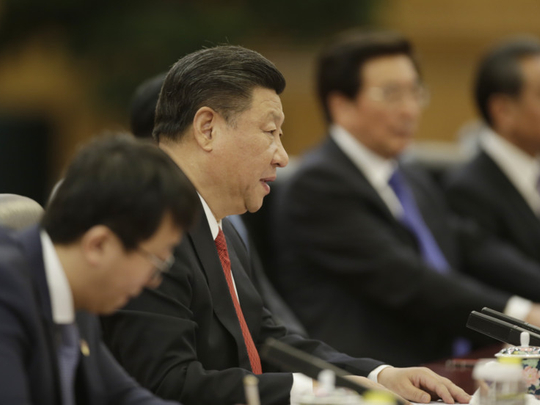
‘Claims that the Belt and Road Initiative is a tool by China to expand its economic interests and dominance abroad ignore the key element underpinning the initiative — win-win results. Since China launched the initiative in 2013, it has invested more than $50 billion (Dh183.65 billion) in countries involved in the Belt and Road. A total of 56 economic and trade cooperation zones have already been built by Chinese businesses in these countries, generating nearly $1.1 billion in tax revenue and creating 180,000 local jobs,” said China’s state news agency Xinhua in an editorial.
The Straits Times said China deserved credit for laying out an inclusive vision for its modern Silk Road initiative, especially at a time when others, notably the United States, were looking inwards. “The ambitious plan to boost global commerce by linking China to Asia, Africa and Europe is off to an encouraging start, with world leaders and delegates from 130 nations and 60 international organisations participating in the two-day Belt and Road Forum in Beijing... Against the backdrop of possible American economic and strategic retrenchment, the success of this project would do much to keep alive the positive effects of globalisation,” the paper said.
The New York Times concurred, observing: “[Chinese President] Mr Xi [Jinping] held the Beijing forum to showcase his One Belt, One Road initiative, which is aimed at creating a modern version of the Silk Road, a network of trading routes from China to Africa and Europe. Dozens of world leaders, including President Vladimir Putin of Russia, attended. Many of them praised Mr Xi’s vision, which he first voiced in 2013, and were enthusiastic about locating projects in their countries, financing them, building them or managing them. The plan offers many ways countries can participate; Britain and Singapore, for instance, seem eager to handle private financing.”
The paper then went on to place the project in American perspective and said: “Like most of its western allies, the United States has been wary of Mr Xi’s initiative... American companies eager for a share of the One Belt, One Road business hope for greater enthusiasm going forward so their interests will be protected. Whatever obstacles lie ahead for One Belt, One Road, it is no exaggeration to say that if the United States and its western allies turn inward, Mr Xi could prevail by default.”
The Asahi Shimbun was more critical in its assessment of the project. “Once upon a time, the Silk Road bridged eastern and western civilisations through trading in all sorts of things, from silk to ceramics, knowledge and religious beliefs... With public opinion in the United States and Europe now leaning toward anti-globalism, there are expectations for China to spur economic exchanges. Given the sheer strength of its economy, it is only natural that China should take on this heavy responsibility. However, as the initiative is designed primarily for the advancement of Chinese investment, it is also criticised as a form of neocolonialism. And unless China modifies its traditional tendency to pursue only its own interests, questions are bound to remain about China’s suitability as the promoter of collaborative international development efforts.”




_resources1_16a31069e4e_small.jpg)






